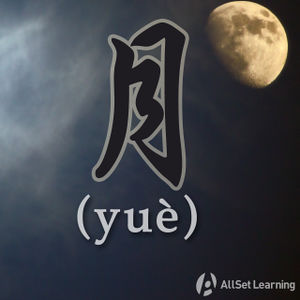Difference between revisions of "Structure of dates"
m (Text replacement - "{{HSK|HSK1}}" to "{{HSK|HSK1}}{{2021-HSK|HSK1}}") |
|||
| (7 intermediate revisions by 2 users not shown) | |||
| Line 1: | Line 1: | ||
{{Grammar Box}} | {{Grammar Box}} | ||
| − | Dates in Chinese follow the order "year, month, day." This is in keeping with the "from big to small" trend which pervades | + | Dates in Chinese follow the order "year, month, day." This is in keeping with the "from big to small" trend which pervades many facets of Chinese culture. |
== Structure == | == Structure == | ||
| Line 13: | Line 13: | ||
</div> | </div> | ||
| − | So April 1st, 2019 is <strong>2019</strong>年<strong>4</strong>月<strong>1</strong>日 | + | So April 1st, 2019 is <strong>2019</strong>年<strong>4</strong>月<strong>1</strong>日 (<strong>èr-líng-yī-jiǔ</strong> nián <strong>Sì</strong>yuè <strong>yī</strong> rì). |
Note that 号 (hào) is commonly used in ''spoken'' Mandarin instead of 日 (rì): | Note that 号 (hào) is commonly used in ''spoken'' Mandarin instead of 日 (rì): | ||
| Line 23: | Line 23: | ||
</div> | </div> | ||
| − | The above example becomes: <strong>2019</strong>年<strong>4</strong>月<strong>1</strong>号 | + | The above example becomes: <strong>2019</strong>年<strong>4</strong>月<strong>1</strong>号 (<strong>èr-líng-yī-jiǔ</strong> nián <strong>Sì</strong>yuè <strong>yī</strong> hào). In written Chinese, however, you will see 日 (rì) rather than 号 (hào). |
== Examples == | == Examples == | ||
| Line 52: | Line 52: | ||
=== Books === | === Books === | ||
| − | + | {{Source|HSK Standard Course 1|50, 114}} | |
| − | + | {{Source|Integrated Chinese: Level 1, Part 1 (3rd ed)|73-4}} | |
| − | + | {{Source|New Practical Chinese Reader 1 (新实用汉语课本1)|122-3}} | |
| + | {{Source|New Practical Chinese Reader 1 (新实用汉语课本1)(2nd ed)|141-2}} | ||
[[Category:A1 grammar points]] | [[Category:A1 grammar points]] | ||
| + | {{HSK|HSK1}}{{2021-HSK|HSK1}} | ||
{{Used for|Expressing time and date}} | {{Used for|Expressing time and date}} | ||
{{Basic Grammar|年|A1|Number + 年 + Number + 月 + Number + 日|今天 是 <em>2011年 11月 11日/号</em> 。|grammar point|ASGT3KF6}} | {{Basic Grammar|年|A1|Number + 年 + Number + 月 + Number + 日|今天 是 <em>2011年 11月 11日/号</em> 。|grammar point|ASGT3KF6}} | ||
Latest revision as of 09:22, 20 April 2021
-
Level
-
Similar to
-
Used for
-
Keywords
Dates in Chinese follow the order "year, month, day." This is in keeping with the "from big to small" trend which pervades many facets of Chinese culture.
Structure
Dates are arranged from largest unit to smallest: year, month, day.
x 年 + y 月 + z 日
So April 1st, 2019 is 2019年4月1日 (èr-líng-yī-jiǔ nián Sìyuè yī rì).
Note that 号 (hào) is commonly used in spoken Mandarin instead of 日 (rì):
x 年 + y 月 + z 号
The above example becomes: 2019年4月1号 (èr-líng-yī-jiǔ nián Sìyuè yī hào). In written Chinese, however, you will see 日 (rì) rather than 号 (hào).
Examples
- 1868 年 1 月 18 号January 18, 1868
- 1910 年 8 月 9 号August 9, 1910
- 2001 年 7 月 20 日July 20th, 2001
- 1 月 1 日 是 新年。January 1st is New Year's Day.
- 12 月 24 日 是 平安夜。December 24th is Christmas Eve.
- 10 月 1 号 我们 去 上海。We will go to Shanghai on October 1st.
- 我 1990 年 7 月 出生。I was born in July 1990.
- 你 的 生日 是 11 月 11 号吗?Is your birthday November 11th?
- 我 2006 年 4 月 17 号 认识 了 他。I met him on April 17, 2006.
- 1980 年 9 月 4 号 我们 结婚 了。We got married on September 4th, 1980.
See Also
Sources and further reading
Books
- HSK Standard Course 1 (pp. 50, 114) Anything Goes (无所不谈) →buy
- Integrated Chinese: Level 1, Part 1 (3rd ed) (pp. 73-4) Anything Goes (无所不谈) →buy
- New Practical Chinese Reader 1 (新实用汉语课本1) (pp. 122-3) Anything Goes (无所不谈) →buy
- New Practical Chinese Reader 1 (新实用汉语课本1)(2nd ed) (pp. 141-2) Anything Goes (无所不谈) →buy



